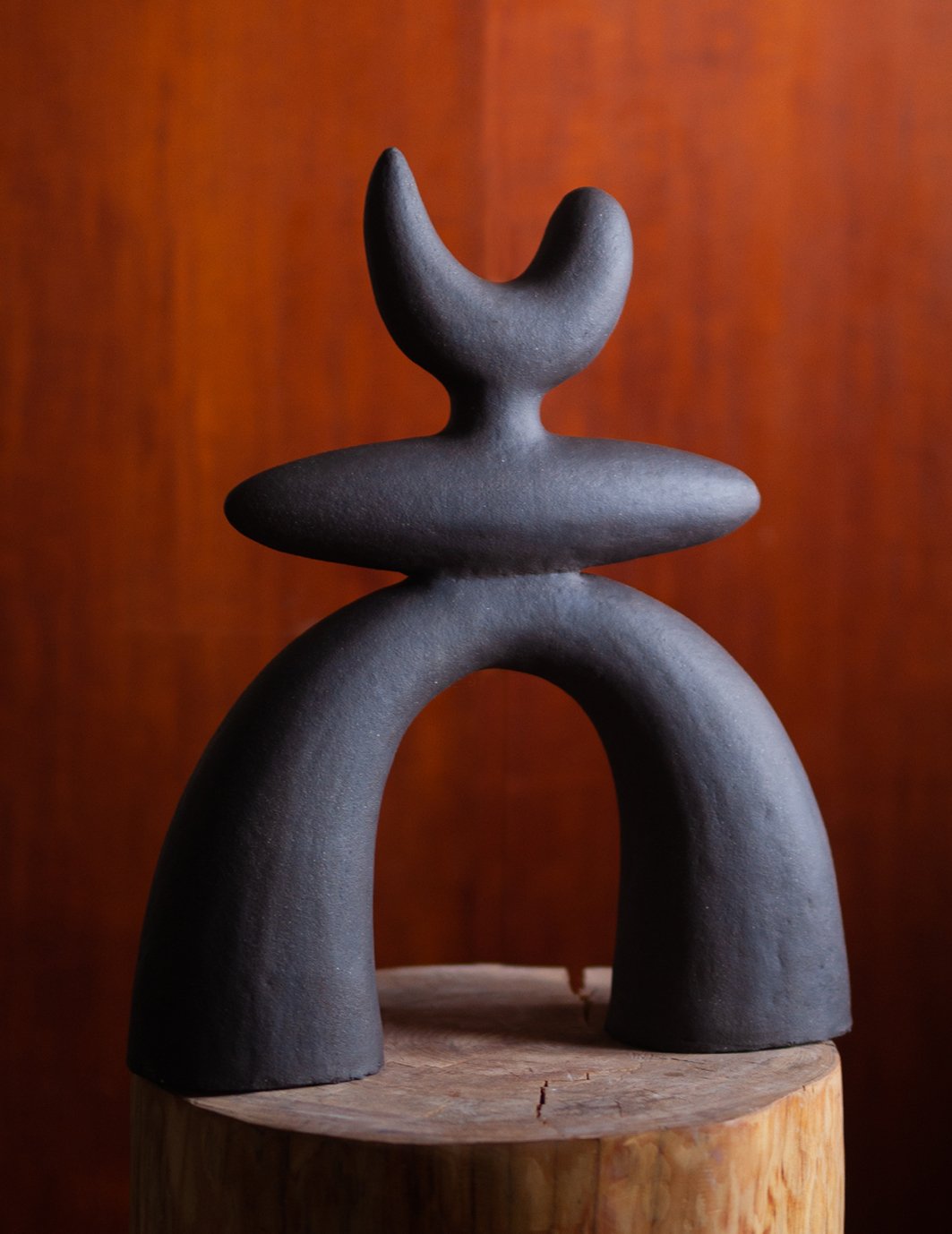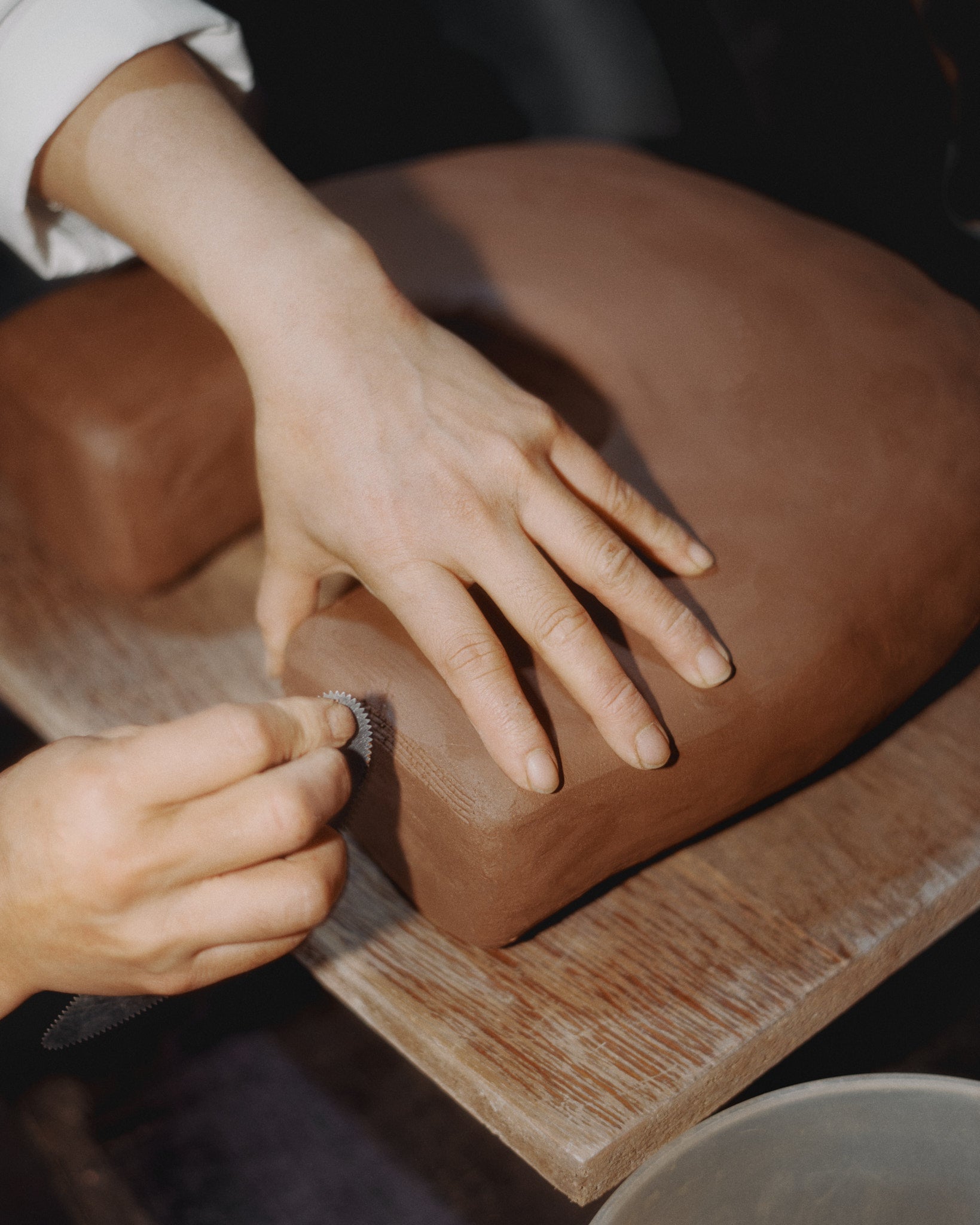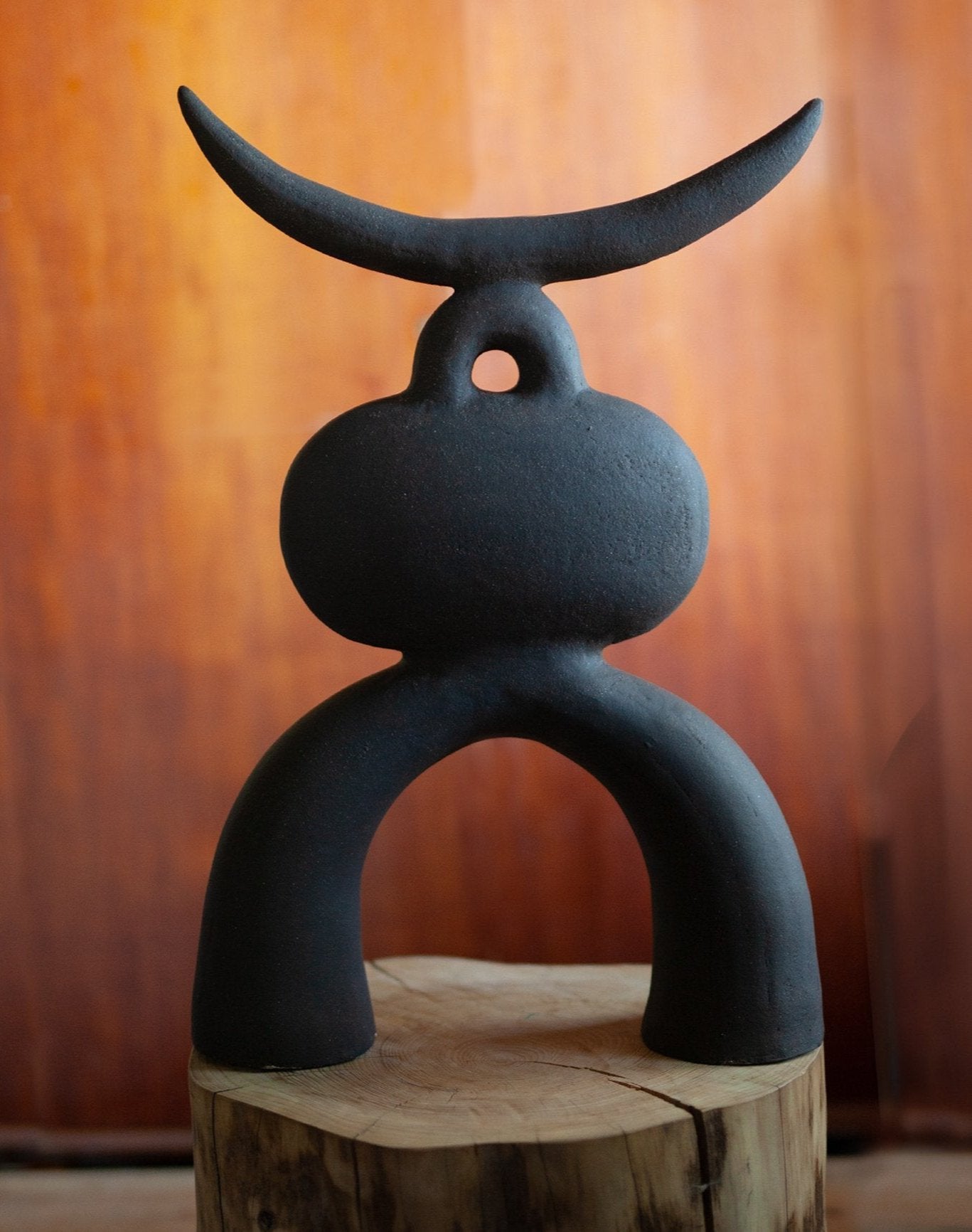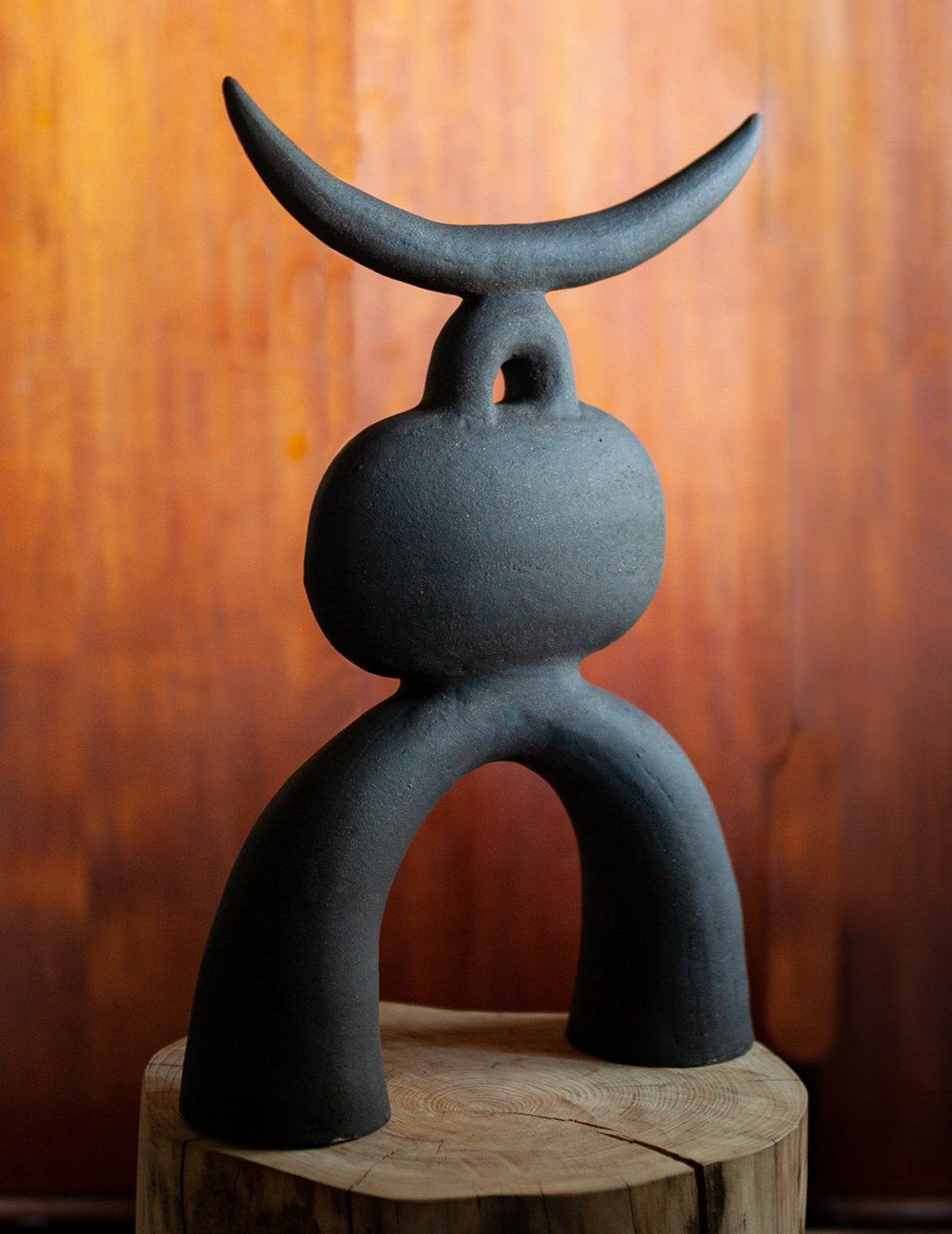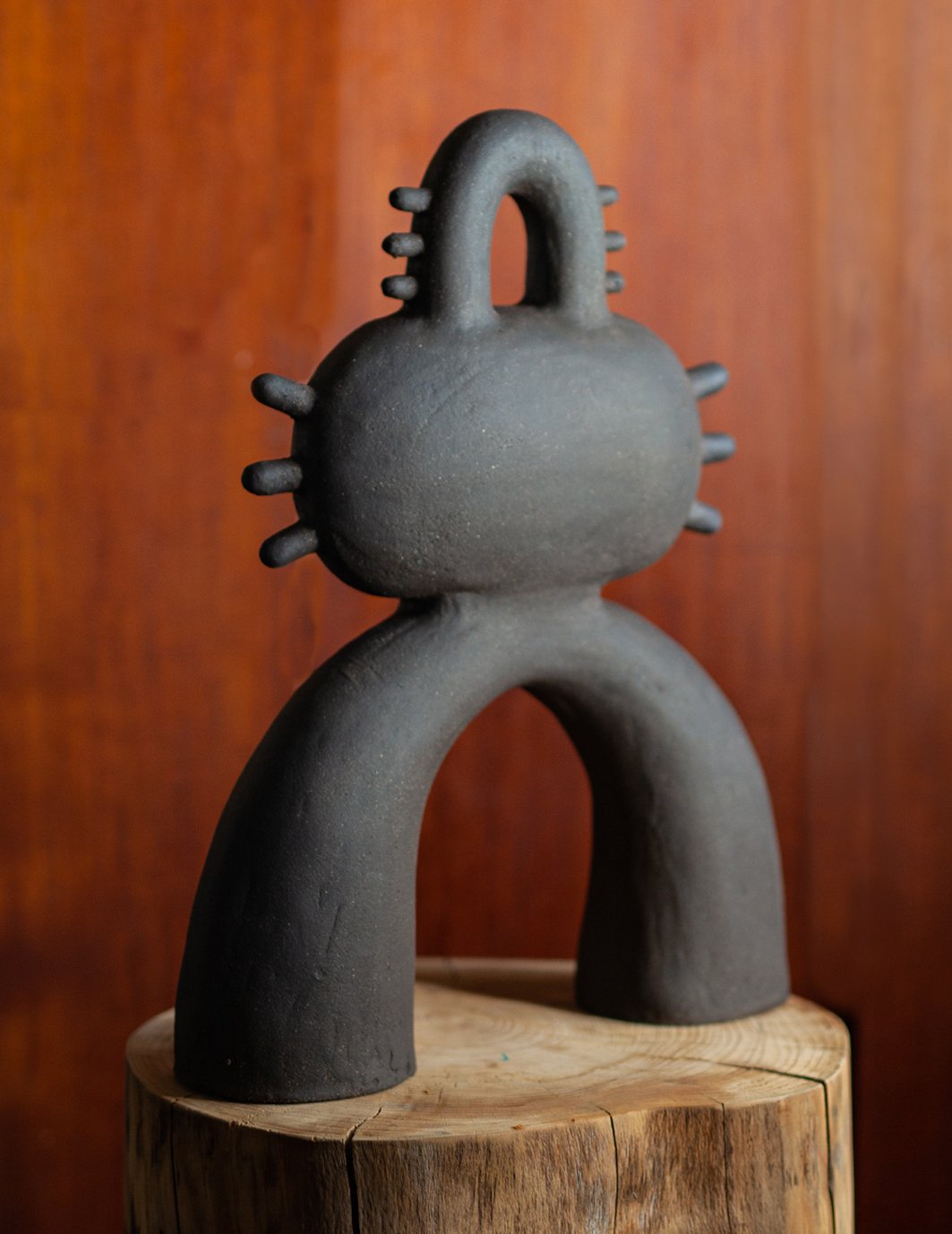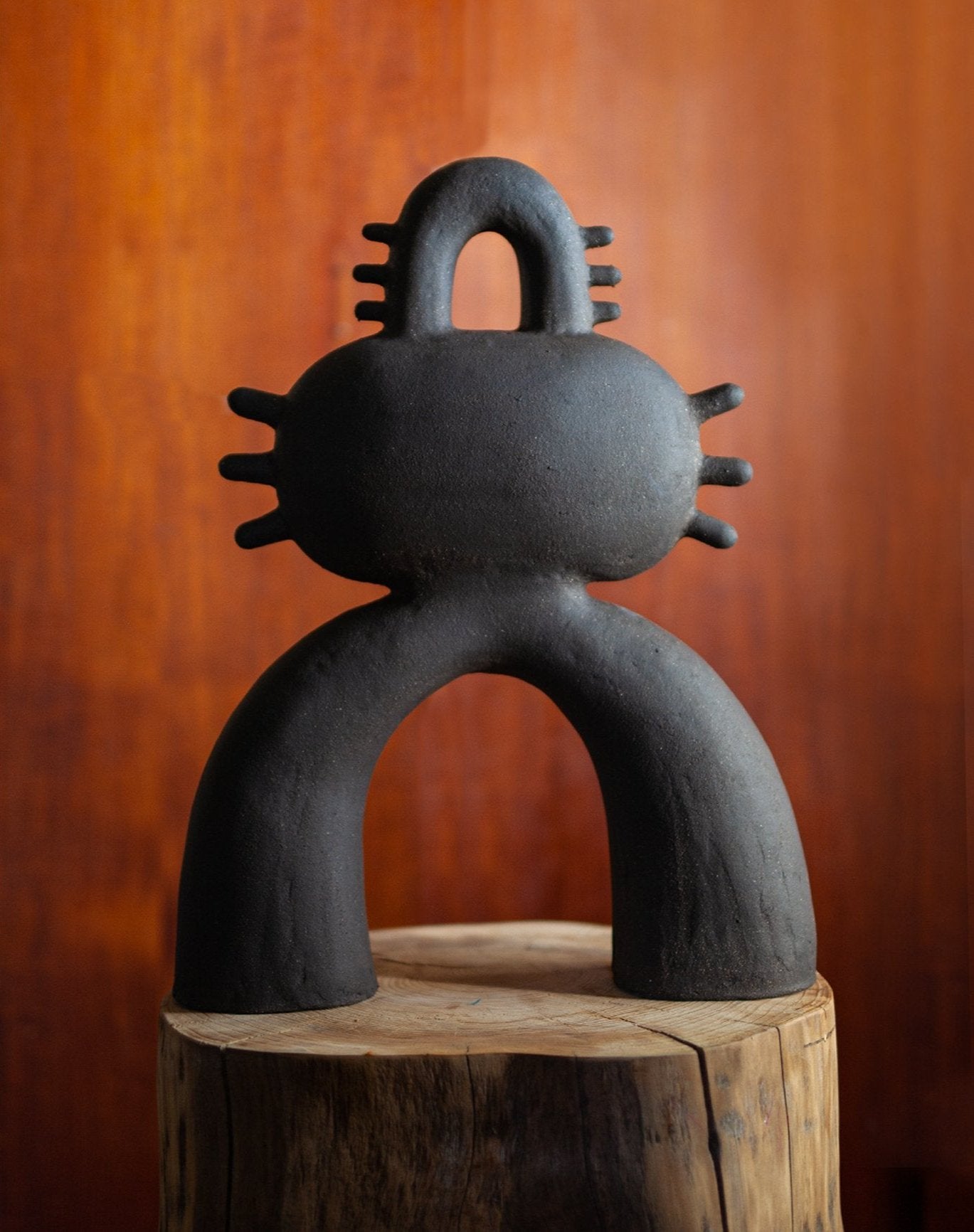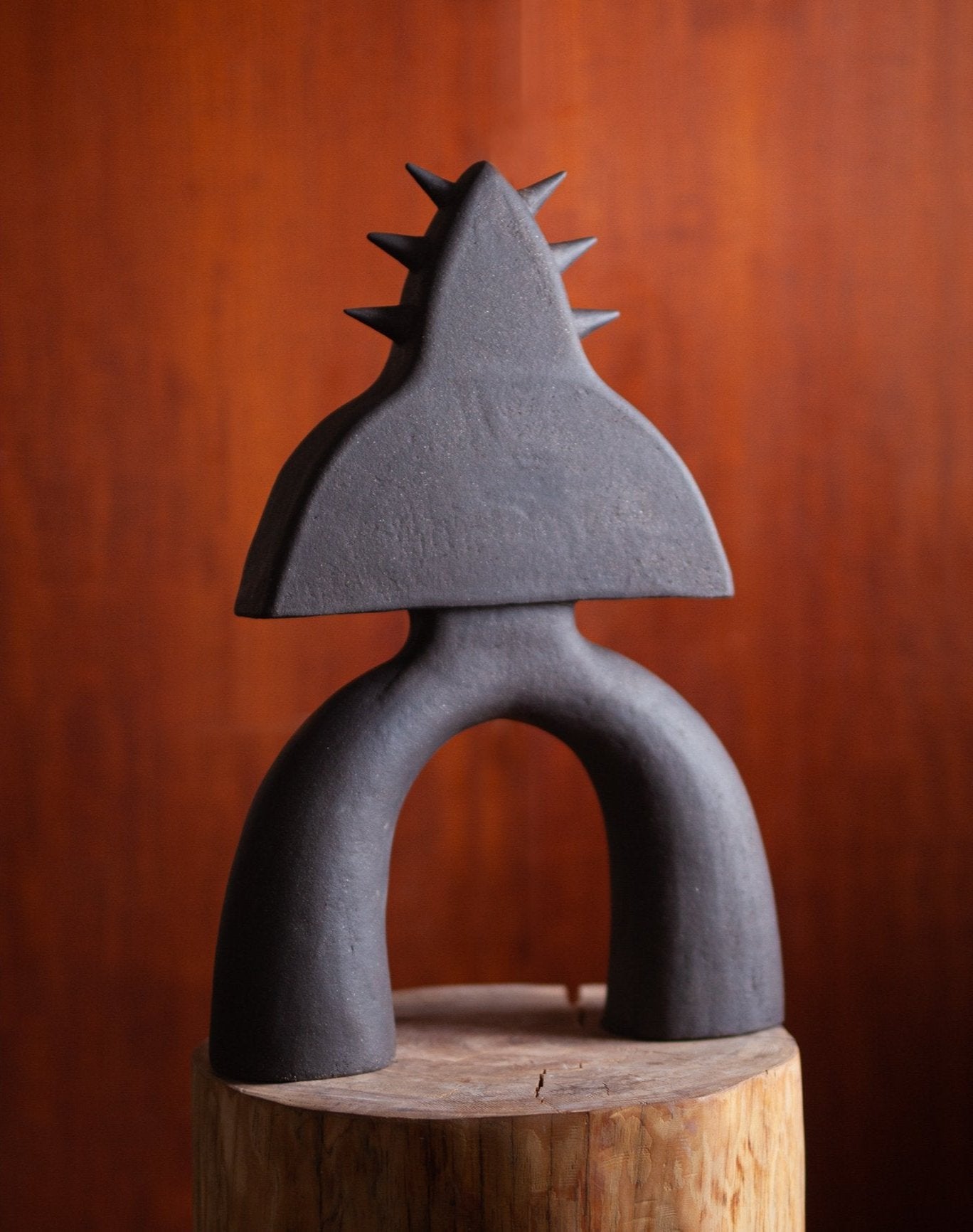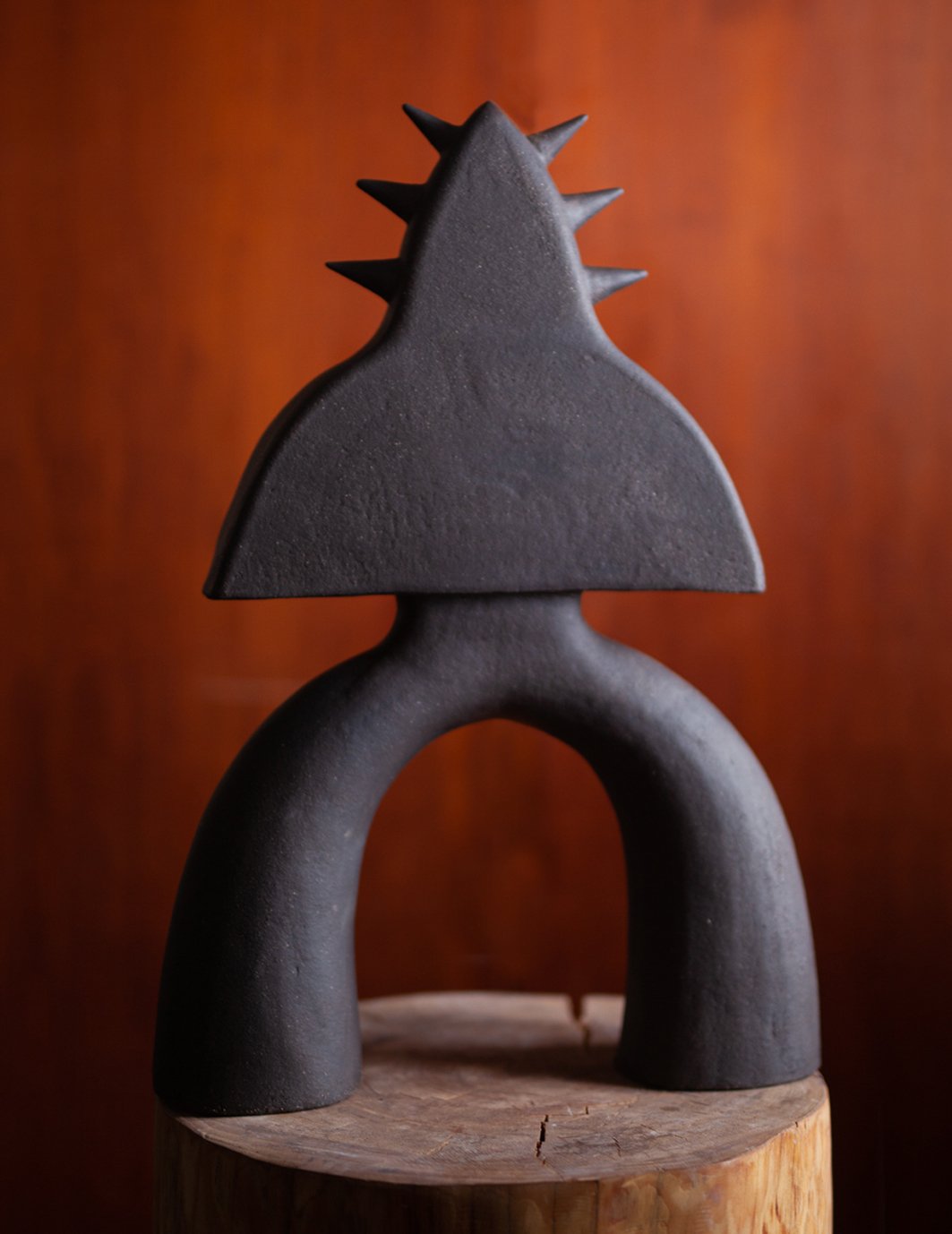The Stoneware Renaissance: Why This Ancient Material Feels So Modern
Stoneware is having a moment that feels both inevitable and quietly thrilling. Across interiors, architecture, and the objects we reach for every day, there is a renewed appetite for materials that feel grounded, honest, and deeply human. Stoneware, with its refined toughness and subtle palette, may be ancient, but it reads as unmistakably modern. In the hands of today’s most compelling makers, it breathes with gesture and restraint, offering a serene counterpoint to the screen-lit pace of contemporary life.
What is stoneware? The science and the soul
If you are new to stoneware, consider this a gentle stoneware guide. Stoneware is a high-fired ceramic, typically matured between roughly 1200–1300°C (2190–2370°F). At these temperatures, clay particles begin to vitrify, closing microscopic pores and creating a body that is delightfully dense, remarkably durable, and often softly resonant when you run your fingers along its surface. The result is a ceramic that feels substantial in the hand and stands up beautifully to daily use.
Why does that matter for modern living? It means stoneware pottery can move gracefully between roles: as sculpture, as vessel, and as a calm focal point in a room. Where earthenware tends to remain porous and porcelain can read as almost overly pristine, stoneware sits in that perfect middle ground. It has a quiet gravitas. Its tones range from warm sand and charcoal to moss and cloud — hues that harmonize with wood, plaster, linen, and natural stone. In a world of high gloss and hyperbole, stoneware ceramics communicate through restraint.
From a functional perspective, stoneware is celebrated for its strength and chip resistance. Many stoneware pieces are suitable for daily living, though care always depends on the maker’s technique and finish. When in doubt, treat it like a beloved garment: gentle cleaning, mindful handling, and deep respect for the craft embedded in every curve and seam.
Stoneware’s soul resides not just in the heat of the kiln, but in the rhythm of the hand that shapes it. Thumb-pressed walls, quiet tool marks, and subtle variations in glaze become a kind of fingerprint, a record of movement and attention. It is this blend of science and intimacy that keeps stoneware feeling fresh — and unmistakably, beautifully modern.
Why stoneware feels modern now
Design culture cycles through materials the way nature cycles through seasons. Steel gave us the industrial age; plastics defined a chapter of mid-century innovation. Today, however, there is a palpable shift toward the elemental. Stoneware answers that call with authenticity. Its surface is honest — never sterile — and it supports the visual calm so many of us crave in our homes.
Three qualities set stoneware apart in contemporary spaces:
1. Material integrity
Stoneware’s high-fired body is inherently strong. That structural integrity allows for both minimal, architectural forms and expressive, sculptural gestures. In interiors, it reads as confident and timeless.
2. Tactile depth
Where glossy synthetics can feel closed-off, stoneware welcomes touch. Satin-matte surfaces, speckled clay bodies, and layered glazes invite the eye to linger and the hand to explore.
3. Natural harmony
Stoneware’s palette is drawn from the earth itself. From chalky whites to iron-rich browns, it harmonizes effortlessly with wood, wool, linen, and stone — the materials that anchor warm, sophisticated rooms.
When you choose stoneware pottery, you are choosing a conversation with material and maker. That conversation is what makes a room feel considered rather than merely decorated. And it is why we continue to champion stoneware ceramics at Trove Gallery: because they ground a space while leaving room for poetry.
Noe Kuremoto: from ancient echoes to modern sculpture
The Japanese archeological past whispers through Noe Kuremoto’s contemporary ceramics, which channel ancient figures into works that feel unabashedly current. There is reverence in these forms, but never nostalgia. Each piece is a presence — an invitation to pause and feel the charge where myth meets modern design.
The sculptural Noe Kuremoto collection at Trove includes a powerful cadre of Haniwa-inspired figures. The Haniwa Warrior 93, Haniwa Warrior 85, Haniwa Warrior 74, Haniwa Warrior 92, Haniwa Warrior 124, Haniwa Warrior 107, Haniwa Warrior 113, and Haniwa Warrior 126 each carry a steady, sentinel-like calm. Priced at 1,700.00 USD, these figures feel both intimate and monumental — the kind of pieces that change the gravity of a room. Even viewed individually, their sculptural silhouettes and hand-finished surfaces create the sense of a timeless companion.
Kuremoto’s female figures — the Dogu — bring a different energy: receptive, grounded, and quietly radiant. Explore the elegant Dogu Lady 91, Dogu Lady 93, and Dogu Lady 95 at 1,105.00 USD, the poised Dogu Lady 74 at 1,236.00 USD, the contemplative Dogu Lady 19 at 1,247.00 USD, and the luminous Dogu Lady 104 at 1,356.00 USD. Each piece is distinct yet family; together they form a chorus of sculptural voices, a celebration of form where soft edges meet purposeful lines.
Completing this narrative are Kuremoto’s Crane Wife figures — works that suggest metamorphosis, devotion, and the tender balance between vulnerability and strength. The Crane Wife 9 and Crane Wife 14, both 1,356.00 USD, bring an otherworldly grace. Place one on a console beneath a wash of afternoon light and you may find yourself tracing the contours daily, as if memorizing a poem line by line.
In a stoneware guide, it is tempting to focus on chemistry and kilns. Kuremoto reminds us of the poetic dimension. The work’s sense of time — ancient, yes, but also fiercely present — is precisely what makes stoneware feel so modern. It is sculpture you can live with, sculpture that sees you as you are and says, yes, be still a moment.
The architecture of calm: vessels by Tania Whalen
Where Kuremoto’s figures stand like guardians, Tania Whalen’s vessels breathe like architecture. Her forms carry the balance of line and volume you might find in a cathedral or a couturier’s drape — precise but never rigid, quiet but never dull. In a world that often rewards noise, Whalen’s work is a masterclass in serenity.
Begin with the rhythmic cadence of the Rhythm 1 Vessel, Rhythm 2 Vessel, and Rhythm 3 Vessel, each at 1,625.00 USD. Their profiles read as a conversation in three acts: movement, pause, reprise. Place a single stem inside or leave the surface uninterrupted; either way, the vessels hold space with refined intention.
The Swirl Moon Vessel at 1,105.00 USD carries a gentle orbital energy, as if the glaze were caught in slow motion. For collectors seeking softness, the Cream Kapok Vessel at 952.00 USD and the Flutter Vessel at 952.00 USD offer quiet lyricism. They pair beautifully with linen, raw oak, and the kinds of spaces where morning light is part of the design.
What unites Whalen’s pieces is a controlled generosity — room for the eye to roam, while every curve remains deliberate. That discipline is a hallmark of fine stoneware ceramics. It requires not only technical fluency, but an artist’s ear for silence. These vessels do not shout. They hum.
To explore more, visit the Tania Whalen collection. Consider styling one of the Rhythm vessels on a pedestal where sightlines converge; let Swirl Moon anchor a bookshelf niche; or place Cream Kapok on a bedside table where its tenderness is the last thing you see at night and the first you greet in the morning.
Transformation and light: Beril Nur Denli and Àlvar Martínez Mestres
There is a particular kind of beauty that surfaces when a maker leans fully into transformation — when clay becomes a record of movement, heat, and light. Two artists in the Trove family, Beril Nur Denli and Àlvar Martínez Mestres, approach this from complementary angles: one expressive and elemental, the other distilled and serene.
Beril Nur Denli’s sculptural works feel born of a spark between earth and atmosphere. The Samsa, 2,808.00 USD, and Fireflies, 3,864.00 USD, carry a sense of metamorphosis — surfaces that catch light in unexpected ways, forms that read differently with each step you take around them. They are pieces for rooms with patience, rooms that invite you to circle, to observe, to return. You can browse the full Beril Nur Denli collection to see how these sculptures converse with daylight and shadow.
Where Denli evokes the charged moment of change, Àlvar Martínez Mestres distills calm to its essence. The Matte Serenity Vessel at 720.00 USD is exactly what its name promises: an object that absorbs the noise of the day and exhales quiet. Think of it as a tone poem in ceramic — a study of proportion, breath, and restraint. It is as at home on a travertine plinth as it is on a minimalist shelf. Meet more from the artist in the Àlvar Martínez Mestres collection.
This is the spectrum of stoneware’s modern appeal. It can be elemental, raw, gestural — or it can be pared-back, meditative, architectural. In every case, what draws us in is the authenticity of the hand and the integrity of the fire.
How to live with stoneware: styling and care
Collecting stoneware is as much about living with it as it is about choosing it. Done thoughtfully, a few well-placed pieces can recalibrate a room — softening transitions, creating focal points, and foregrounding materiality.
Styling principles
• Compose in threes: Group odd numbers to create visual rhythm. For instance, place a Rhythm 1 Vessel beside a slender floor lamp and a small stack of books. The interplay of vertical and horizontal lines will feel deliberate, not staged.
• Mix heights and silhouettes: Pair a tall sentinel like Haniwa Warrior 124 with a lower, rounded piece like Cream Kapok Vessel. This variation creates a landscape for the eye.
• Use negative space: Give pieces room to breathe. A solitary Crane Wife 9 on a console can be more powerful than a crowded surface.
• Invite natural light: Stoneware’s surfaces come alive with shifting daylight. Position Swirl Moon or Matte Serenity Vessel where morning or late-afternoon light grazes the form.
• Let pieces converse across a room: Try placing Dogu Lady 104 on a mantle and Fireflies on an opposite shelf so that their energies balance.
Care guidance
• Dust with care: Use a soft, dry cloth or a gentle brush to remove dust. For unglazed areas, avoid wet wiping if possible; clay can be absorbent in places by design.
• Avoid thermal shock: Sudden temperature changes can stress any ceramic. Keep pieces away from direct heat sources or cold drafts.
• Mind the base: Use felt pads under heavier works like Haniwa Warrior 92 or Samsa to protect furniture surfaces and to allow micro air flow.
• Handle with both hands: Support sculptures from the base, especially slender or articulated forms such as Crane Wife 14.
• Follow maker notes: If a vessel is intended purely as sculpture, treat it accordingly; if it is suitable for flowers or water, empty and dry after use to protect the interior.
Context is everything
Stoneware thrives in rooms where materials are allowed to lead. Consider lime-washed walls, woven textiles, oiled wood, and stone surfaces that echo the clay’s own story. A Haniwa figure near a linen-draped window; a meditative vessel beside a reading chair — these are the small, human-scale decisions that make a home feel cohesive and considered.
Choosing your piece: a collector’s stoneware guide
When collectors ask how to select among stoneware ceramics, we offer three simple lenses: form, feeling, and future.
Form
Start with silhouette. Are you drawn to verticality and presence, as in Haniwa Warrior 113 or Haniwa Warrior 107? Or do you prefer enveloping curves, as in Flutter Vessel or Cream Kapok Vessel? Consider sightlines and scale: a taller piece can anchor a corner or hearth; a lower vessel shines on a bedside table or shelf.
Feeling
Hold the work, or if you are browsing online, imagine its tactility. Do you crave the steadiness of a modern totem like Haniwa Warrior 74 or the whispered movement of Swirl Moon? Feeling is your truest compass; a piece that resonates will continue to reward you with time.
Future
Think beyond today’s vignette. Stoneware pottery builds beautifully into a collection. A trio of figures — say, Dogu Lady 91, Dogu Lady 93, and Dogu Lady 95 — can evolve across rooms and seasons. So can a sequence of vessels like Rhythm 1, Rhythm 2, and Rhythm 3. Collect with intention and you will find that each new piece deepens the voice of the whole.
And of course, consider practicalities. The price spectrum across our stoneware offerings allows for thoughtful collecting at many levels: • Kuremoto’s Haniwa Warriors at 1,700.00 USD bring sculptural gravitas. • Dogu Lady works range from 1,105.00 to 1,356.00 USD, offering varied expressions and scale. • Crane Wife figures at 1,356.00 USD bridge sculpture and myth. • Tania Whalen’s vessels span from 952.00 to 1,625.00 USD, opening avenues for both first-time and seasoned collectors. • Àlvar Martínez Mestres’s Matte Serenity Vessel at 720.00 USD is an elegant entry point. • Beril Nur Denli’s Samsa at 2,808.00 USD and Fireflies at 3,864.00 USD anchor a room with elemental force.
As you build your collection, consider pairing pieces across makers. The stoic contour of Haniwa Warrior 126 can be beautifully offset by the luminous hush of Matte Serenity Vessel. Or let the atmospheric energy of Fireflies converse with the measured cadence of Rhythm 2. In these dialogues, rooms find their tone — one that is luxurious without pretension, quietly alive with craft.
At Trove Gallery, we believe stoneware is more than a material story. It is an invitation to slow down and live with objects that have a pulse — objects made by artists whose hands translate earth into form. Explore our dedicated maker pages to discover more: Noe Kuremoto, Tania Whalen, and Beril Nur Denli. Each brings a distinct voice to the shared language of stoneware.
Ready to begin — or to deepen — your own stoneware journey? Shop the sculptures and vessels linked above, and visit our Stoneware Edit to see new arrivals as they land from the kiln. If you would like guidance, our curators are here to help you create a collection that feels intimately, unmistakably yours.
